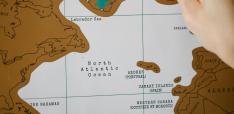What Happened to Europe’s Left?

Only a handful of European states are currently governed by left-wing governments, and several of the traditionally largest left-wing parties, such as the Socialist Party in France, have experienced substantial drops in support. Jan Rovny argues that while many commentators have linked the left’s decline to the late-2000s financial crisis, the weakening of Europe’s left reflects deep structural and technological changes that have reshaped European society, leaving left-wing parties out in the cold.
Last year was an ‘annus horribilis’ for the European left. In Austria, France, and the Czech Republic, the left lost its governing position, and the same might occur in Italy in a few weeks. Today, only Portugal, Greece, Sweden, Slovakia, and Malta are governed by the left. The 2017 collapse was precipitous. The Dutch Workers’ party went from roughly 25% to 6%; the French Socialist Party went from roughly 30% to 7%. The Czech Social Democrats went from 20% to 7%. And the Czech Communist party saw its worst result in its almost 100-year history.
It may be tempting to connect the failure of the European left to the recent economic recession. It was during this recession or its aftermath that many left-wing governments (in Britain, Spain, Denmark) lost their mandates. Undeniably, the recession with its massive social cost caused much electoral instability, and opened a political door to various populist challengers. It would be, however, naive to suggest that the economic crisis was anything other than a catalyst. It was an accelerator that speeded up the onset of consequences of a structural development that we have been witnessing for at least three decades.
The weakening of the political left has been long in the making. It has been largely caused by deep structural and technological change that has altered the face of European societies, changed the economic patterns of the continent, and given a renewed vigour to politics of identity. In this process, traditional left-wing parties have lost not only the grasp of their main political narrative, they have lost much of their traditional electorates. These electorates did not so much ‘switch’ away from the left, they have rather disappeared as a comprehensible social group.
What was left behind?
Let us start at the beginning by asking what was the European left in its heyday. The defining characteristic of the post-war European left (which was distinct from the eastern European left of the time) was the democratic fight for the rights of working people. Shortly after the Second World War, most of the mainstream European left rejected Communism, and accepted a democratic path towards the emancipation and support of the working class. During the golden age of post-war development, the left participated in the construction of European welfare regimes, and where it has been most successful – in Scandinavia – it built up universalistic, egalitarian, and predominantly tax-funded and state-run systems of welfare provision.
In this construction, the parties of the left have primarily leaned on a significant and relatively homogenous group of working class electorates. These electorates were since the late 19th century defined by a strong sense of group belonging, or ‘class consciousness’. This consciousness was constructed from the cradle and lasted to the grave. It was passed on from parents to children, and cultivated by a plethora of party-associated organisations, such as daycare centres, sports clubs, choral societies, women’s clubs, and others. Together with workers’ unions organising the work on factory floors, and later in offices, these organisations helped construct a working-class subculture that permeated the social as well as the political, and that ensured the electoral stability of the European left.
Seymour Martin Lipset suggested that the greatest achievement of the left had been the lifting of the working class away from authoritarianism and towards cosmopolitanism espoused by left-wing intellectuals. Indeed, the general success of the left in capturing and ‘educating’ the lower social strata profoundly shaped European party systems. In western Europe, the political left has been uniformly and continuously associated with progressive policies not only in the economic domain, but also in non-economic matters such as the environment, women’s rights, and (slowly and shyly) the rights of minorities – both ethnic and sexual.
Somewhat paradoxically, the left’s success precipitated its own demise in a dialectic fashion. First, the emancipation of the working class – primarily the extension of access to higher education – changed the working class and its dependence on left-wing subcultures and organisations. Second, the left’s enabling of the search for rights allowed younger generations to seek personal liberation from traditional hierarchies, including those of the left.
From proletariat to ‘precariat’
Having lived in Gothenburg, Sweden, the home of the Volvo, I eagerly visited the Volvo factory, looking forward to meeting the contemporary proletariat. What did I see? Halls and halls of conveyor belts shuffling skeletons that would become fancy SUVs in about an hour, while silver robotic arms added various parts to them. And the working class? I saw precious few of them. They were mostly young women, sitting on comfortable chairs surrounded by computer screens and keyboards, listening to their iPods… I later learned that these workers earn as much as Swedish university professors (that means – a lot).
The traditional working class as we imagine it from the times of Henry Ford does not exist anymore. Most of the workers at Volvo with their above-average pay, comfort and job security can hardly be considered as such. Today’s working class is much less visible, and much more atomised. Today’s working class are the masses of unskilled service workers who predominantly cook, clean or drive. Often, their jobs are short-term or part-time, and low-paying. These people do not come into contact with each other nearly as much as the traditional factory-floor workers did. They are more often than not from diverse minority backgrounds, and thus are separated by cultural boundaries. In short, these people have significantly reduced ability to organise, and they do not. As my research with Allison Rovny shows, their political belonging is weak, and – in the absence of a formative subculture – it is malleable.
The extension of access to higher education has increased the individual ability of people to process more complex information and make their own choices. As education also brings better jobs, this process has created more cognitively and financially independent citizens. The 1968 generation opted for more socially liberal and less hierarchical politics, forming new social movements and later political parties that espoused left-wing economics, but that were defined by their social and cultural openness.
In the context of the changing working class and the developing political supply, the traditional left parties became parties of the new middle class – primarily of the increasing numbers of white-collar state employees. In doing so, the traditional left responded to the Green challenge by adopting more environmental and generally socially liberal profiles, but also it slowly but surely abandoned the new ‘precariat’ – the new service working classes and those in poor or irregular employment. Politically pulled by social-liberalism (of the ‘new’ left), and by economic moderation to the centre (preferred by a new group of urban white-collar workers and ‘yuppies’), the traditional left opened a political breach – a gaping political vacuum around those seeking economic protection, and a certain cultural traditionalism. The salience of this left and traditionalist political space, vacated by the mainstream left parties, would be boosted by another important structural development – the growth of transnational exchange.
Transnational transformations
The fall of the Berlin Wall in 1989 was a symbolic milestone, opening not just communist eastern Europe, but the entire developed world up to increased international exchange. My ongoing research with Gary Marks, Liesbet Hooghe and David Attewell shows that the three decades since have witnessed significant liberalisation of international trade, expressed in the formation of the WTO, and in the deepening of European integration, which has always practically centred around the free flow of goods, capital and people. The opening of European borders, as well as various conflicts on Europe’s doorstep and beyond, further increased migration into and within Europe.
The rise of transnationalism – of extensive cross-border flows of goods, services, money and people – is firstly an economic phenomenon. It replaces domestic products and labourers with cheaper foreign alternatives. Transnationalism thus divides society into those who, while happily consuming cheaper products, earn their income in either sheltered (public) or internationally competitive sectors on the one hand, and those, on the other hand, whose livelihood is threatened by foreign competition in the form of imported products, and imported labourers. Transnationalism thus creates economic winners and losers, who are increasingly keenly aware of their status in our globalised societies.
Transnationalism is, however, also a cultural phenomenon. While the privileged enjoy cross-border travel for business and pleasure on an unparalleled scale, they gain experiences, learn languages, build friendships and, on occasion, have found families across borders and cultures; those with limited financial, and educational means live in a world defined by national boundaries, customs, and language. The inflow of culturally distinct migrants into urban centres furthers this alienation. This opens a cultural chasm between the transnational cosmopolitans, concentrating in larger cities that increasingly embrace pluri-culturalism, and national traditionalists mostly present in smaller, peripheral localities, fearful of immigrants, and sceptical of their immigrant-accepting cosmopolitan co-nationals.
Transnationalism redefines the political space by dissociating economic progressivism from socio-cultural openness. Transnationalism associates cosmopolitanism with open economic exchange on the one side, and national traditionalism with economic protectionism on the other. In doing so, transnationalism effectively shatters the old electoral coalition of the left. The naturally protectionist workers are pulled away from the naturally cosmopolitan intellectuals. This brings us back to the great political void, to the question of who will represent the new ‘precariat’, seeking economic protection, and cultural traditionalism. Transnationalism also increases the salience of populist anti-elitism, as rural traditionalists feel unrepresented by, shunned by, and distinct from the largely urban, cosmopolitan elite. The populist call to the ‘common man’, is a call of economic and cultural protection against the transformations of transnationalism.
The left out
In shifting its focus to the new middle classes, the left let the new ‘precariat’ fall towards nationalist protectionism, where it became fertile ground for the populist radical right. The populist radical right has been around for a good while. First, as an anti-tax, anti-welfare critique of the left, but later, with the dawn of transnationalism, it tapped into the sensitive issue of immigration with game-changing vigour. Attracting a wide coalition of economic interests through its blurry economic proposals, as my earlier research shows, the radical right married its traditional petit bourgeois electorate to swaths of the new ‘precariat’, and outperformed the left as the dominant political voice of the contemporary working classes.
The transformation of the left, however, offers opportunities for diverse political entrepreneurs. As my forthcoming work with Jonathan Polk, as well as with Bruno Palier and Allison Rovny demonstrates, in countries that experienced particularly drastic economic downturn during the economic recession, such as Greece and Spain, and where the ‘precariat’ consequently includes many young and educated citizens, the populist challengers are mostly radical left parties that call for a return to true – economically interventionist, and culturally liberal – left-wing politics. In other places, populists eschewing comprehensible political labels gain electoral support largely through the votes of the ‘precarious’ left-behind.
The transformation of the proletariat into the ‘precariat’, together with the dawn of transnationalism, have reframed the political field. Post-war politics saw economic interests – primarily the extent and contours of the welfare state – as the dominant political contest that subsumed or largely ignored other, non-economic divides. The new politics of transnationalism promises to be a politics of identity, with the cleaving lines defined by ethno-national labels, as well as by the distinction between large urban centres and the rural periphery. As my work with Gary Marks, Liesbet Hooghe and David Attewell suggests, these divides may be as deep, sticky and formative, as were the traditional class lines of the 20th century. While these divides are as economically rooted, as they are cultural, the new political entrepreneurs will find it easier to frame their narratives in identity-based terms. We should thus expect to see economic issues couched in non-economic discourses of national and local identity.
This competition frame is foreign to traditional left-wing parties, whose identity was always rooted in economic class. They are facing a struggle to adapt to this changing dimensional structure. Recent presidential elections in France as well as in the Czech Republic demonstrate the shift, as both countries saw a leftish authoritarian opposed by a centrist liberal in the second round, while the traditional left imploded. Interestingly, in the context of this new political competition, the west resembles the east, and the mainstream left everywhere is left out in the cold.
Jan Rovny joined Sciences Po in September 2013 as an assistant professor, affiliated with the Interdisciplinary Research Centre for the Evaluation of Public Policies (LIEPP) and the Centre d'études européennes (CEE).
This first appeared on the LSE's EUROPP blog.
Image credit: Ric Capucho via Flickr (CC BY 2.0)


